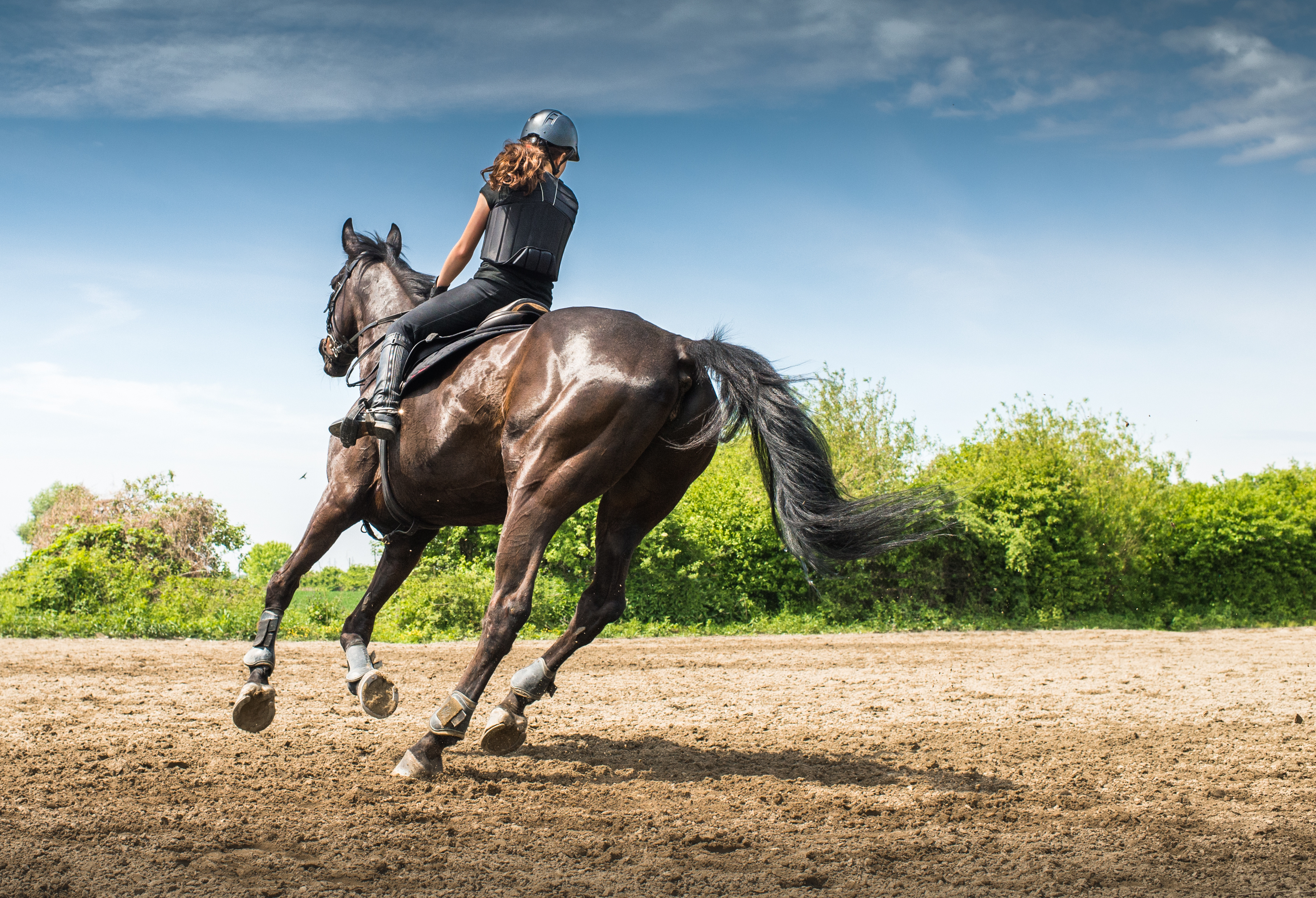Physical causes of canter lead problems
- July 17, 2025
- ⎯ Equus
Listen here:
The concept of leads at the canter or lope is simple enough: When a horse is on the correct lead, he starts each stride with the outside hind leg and ends it with the inside foreleg. Riders cue their horses to encourage this sequence and quickly learn to recognize by sight and feel when a lead is wrong. Returning to the trot and asking for the canter again usually remedies the situation right away.

When a horse consistently picks up the wrong lead, however, it’s easy to get frustrated. There are many tricks and techniques for getting a horse to take a particular lead, but these ignore an important reality: A horse who consistently picks up the wrong lead probably has a physiological reason for doing so.
Horses naturally want to canter on the correct lead because it helps them keep their balance. The trailing (outside) foreleg at the canter or lope resists the centrifugal force that pulls the horse to the outside of the turn. If you watch horses play in the pasture, most will choose the correct lead when cantering through tight turns or switch to it at some point to steady themselves. And even in their early under-saddle experiences, young horses will tend to pick up the correct lead naturally.
Click here to learn what behavior may indicate lameness in horses.
When a horse always resists cantering on a particular lead, it’s usually because it’s physically difficult or painful to do so. Lead problems may result from discomfort or stiffness anywhere in the legs, body or back. Many times the horse isn’t overtly lame at the walk or trot, and he may even be able to pick up that lead at liberty with little problem without the added weight of a rider, but it’s still a physiological problem and not a training issue. Likewise, lead problems may signal a malfunction in the neurologic system.
If your horse is having lead issues, set aside training until you’ve had your veterinarian and farrier weigh in on the problem. Identifying and correcting any lameness or neurologic issues, which may take several months or weeks, is the only sure-fire way to help your horse.
Don’t miss out! With the free weekly EQUUS newsletter, you’ll get the latest horse health information delivered right to your in basket! If you’re not already receiving the EQUUS newsletter, click here to sign up. It’s *free*!





